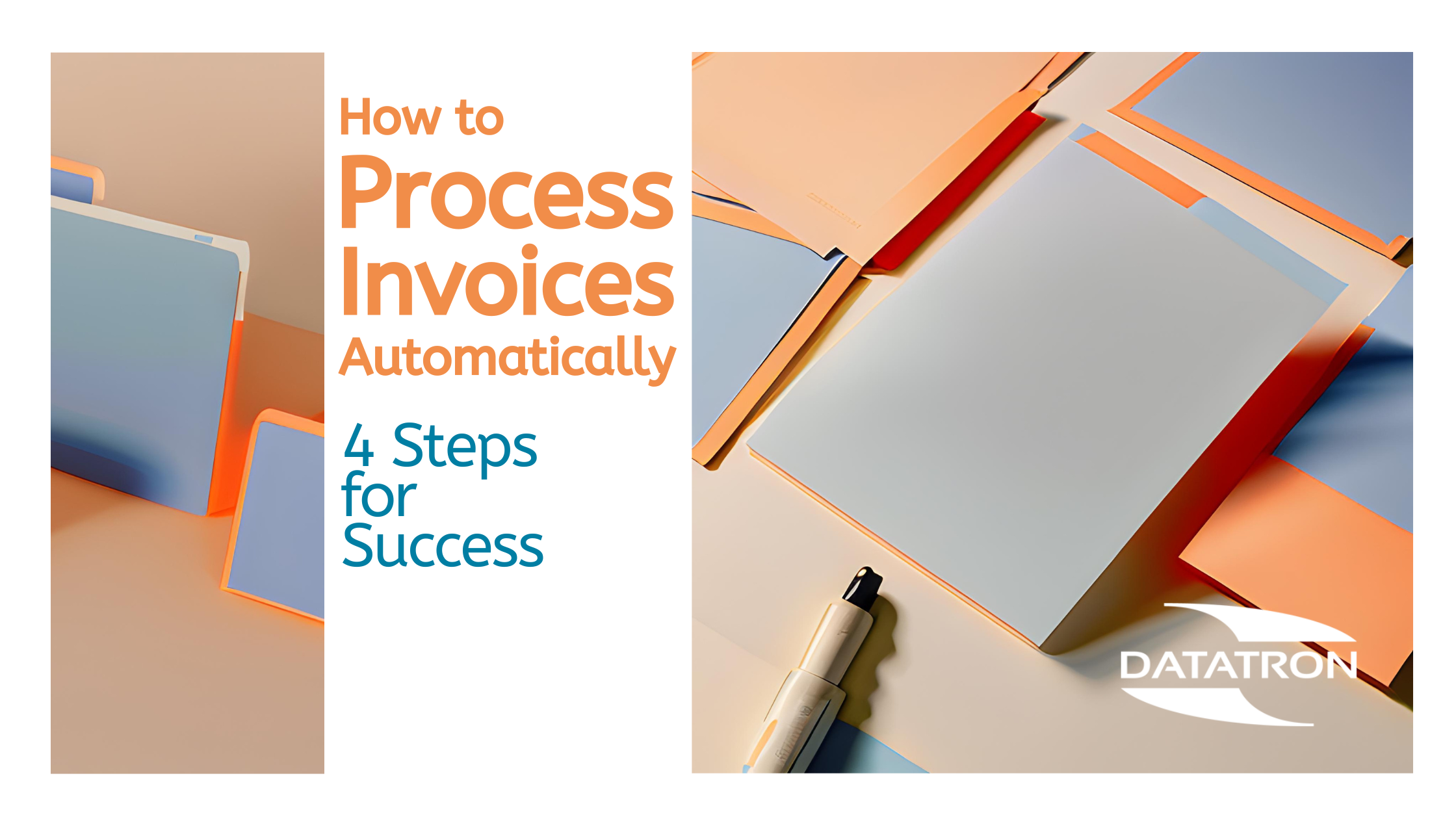How to Process Invoices Automatically: 4 Steps for Success
Invoice processing stands as a critical cog in business operations. However, involving many individuals and a series of intricate steps can be time-consuming, labour-intensive, error-prone, and inefficient.
Automated invoice processing (AIP) emerges as a game-changer, offering a streamlined and accurate approach to AP processing. This innovative technology saves valuable time and helps organisations save money by reducing errors and automating workflows.
In four simple yet powerful steps your invoicing process can be revolutionised, bringing greater efficiency and precision to your financial operations.
Four steps for Invoice Processing Automation
1. Utilise Electronic Invoicing
A digitisation strategy is the foundational step for automating invoices. Digital invoices are the cornerstone of automated invoice processing. The digital format streamlines the exchange of invoices and kick-starts processing, paving the way for automation.
Your organisation can achieve Electronic Invoicing through various methods, such as:
- Online Portals: A dedicated portal where vendors drop digital invoices.
- Virtual Mailrooms: A service that digitises physical invoices into digital formats.
- Inbox Monitoring: Automatically routes incoming invoices, reducing manual handling and minimising errors in processing workflows.
2. OCR and AI Technology
Optical Character Recognition software takes the images of digital invoices and extracts text, changing it into searchable, editable, actionable data. Artificial Intelligence then derives meaning, filtering for AP-relevant information and cross-referencing with CRM databases, adding further validation.
AI recognises errors or discrepancies by matching and accessing CRM databases, starting an exception workflow for human validation.
3. Automate Workflows (EDMS)
The third crucial stage in automating invoice processing uses document management software to execute the data-driven decisions made in step two, eliminating manual routing, approval, validation, and retention.
4. Integrate with Accounting Systems
The final stage of invoice processing automation: seamless integration with an accounting system. This automatically transfers data from the invoice processing system to the accounting system.
Automated systems can be utilised to schedule payments based on due dates, significantly reducing the need for manual payment processing. This streamlines the entire invoicing and payment cycle, improving efficiency and minimising errors.
Improve Invoice Processing with Datatron
The advantages of automating invoice processing are clear. Organisations stand to benefit from reduced errors, time savings, and enhanced efficiency, resulting in swifter payment processing, more effective cash flow management, and strengthened supplier relationships.
If you're ready to harness the full potential of automated invoice processing, consider exploring Datatron's cutting-edge services in this domain. We are dedicated to providing tailored solutions that can help you unlock the benefits at each stage of the invoice process.
To learn more about how Datatron can streamline your invoice processing, visit our website today.


-1.png?width=393&height=131&name=Untitled%20design%20(16)-1.png)